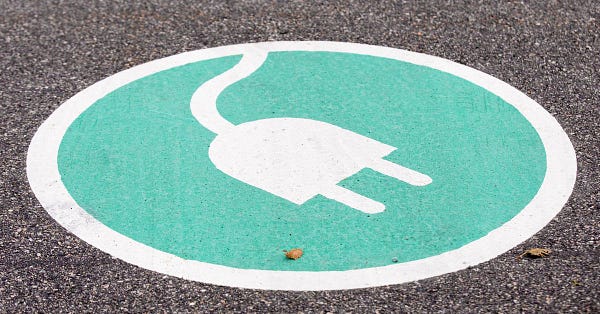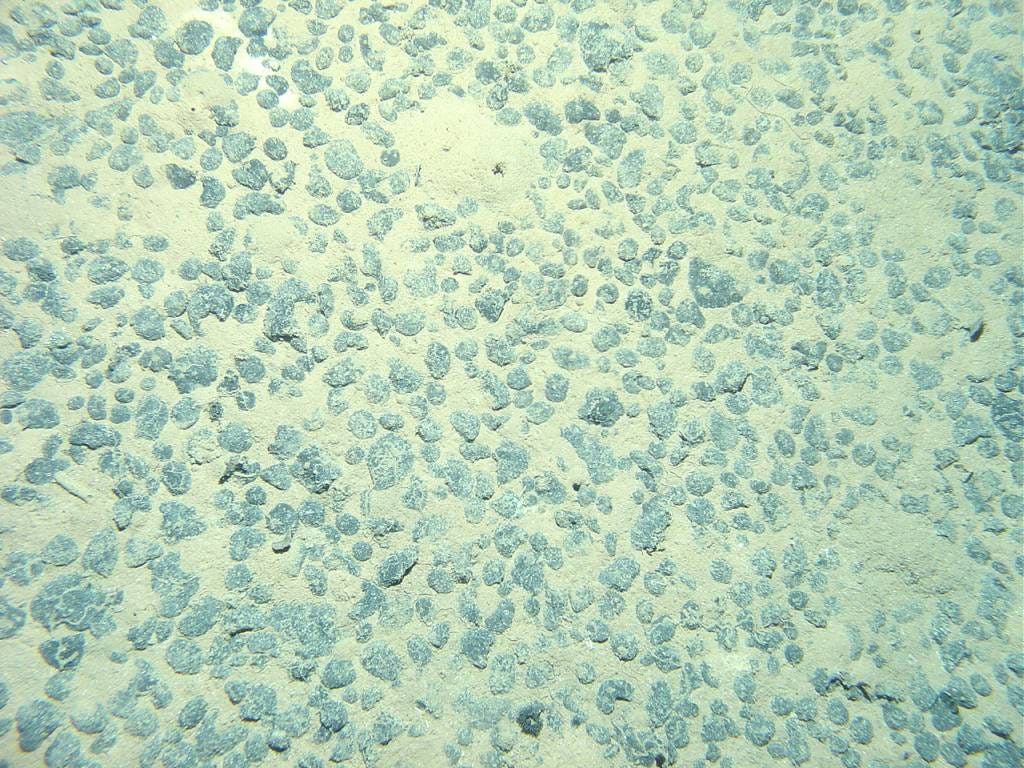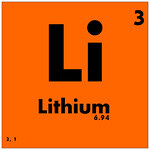We have no idea how to reach net zero emissions
& Lithium in the Bolivian election, manganese nodules, a favorite music video
We have no idea how we will eventually achieve clean energy.
Earlier this month, the report-writing machine of the International Energy Agency churned out a view of the future that may be more somber than any before. The central conclusion was that the world would need innovate with wartime-like speed.
Many of the technologies that will keep us from warming the planet beyond even the more mundane temperature rises are not ready to reach customers. The majority are not even close.
The IEA predicts that almost half of our emissions savings — the fossil fuels we’ll refuse to burn because of clean energy technologies — will come from technologies that you can’t buy anywhere today. So how will we know what to plan for?
From lab to patents to development and deployment — that process needs to happen at a pace “more rapid than any seen in recent energy technology history.” LED lights may be an example, but even those took 10-30 years. Such a speed may mean technologies are only tested once at scale before they are fully dispersed.
And as PV Magazine points out, the IEA is calculating these rates with a new middle-of-the-road scenario. Its “Sustainable Development Scenario” has conspicuously shifted its target net-zero carbon emission from 2050 to 2070. At that point, we’ll have a 2/3 chance of keeping global average temperatures below a 1.8C rise.
The report piles responsibility on scientists and companies to fund innovation, but also governments, which the IEA hopes will unlock targeted grants and support strong value chains.
Electric vehicle batteries, referenced as crucial to wiping out big emitters (transportation), are considered “mature”, or proven at scale and expected to grow. But we’re still innovating EV batteries almost weekly in search of not only cheaper alternatives, but alternatives with more promising supply chains. We don’t know what’s the best option.
The report naturally focuses on a range of material technologies (more than 400, in fact), and they devote minimal time to methods that reduce consumption, which may also be viewed as a kind of innovation — even technology.
In the “Sustainable Development Scenario”, 7% of emissions savings are attributed to strategies to reduce demand for energy. That includes recycling programs, but also greater consumer awareness of energy use. It does not, however, envision the possibility of non-growth economies, but the IEA isn’t exactly known for testing the limits of a paradigm.
With conclusions as stark as this, perhaps the IEA will convince itself that there needs to be more thoughtful consideration of the drivers of carbon emissions.
I recommend reading David Roberts’ rundown of the IEA’s report in Vox:


Weekly InQuarry
How did lumps of manganese form at the bottom of the ocean?
Jared Leadbetter [what a name] left a chalk-like form of manganese to soak in tap water on his desk at Caltech. He returned after several months to find that the jar had become coated with a dark material.
“I thought, ‘What is that?’” he explained in a press release. “I started to wonder if long-sought-after microbes might be responsible, so we systematically performed tests to figure that out.”
Microbes were indeed responsible. Such microbes — which could consume the calories produced from manganese oxidation — probably existed in Leadbetter’s tap water.
The discovery has major ramifications for the manganese lumps on the bottom of the ocean that are already occupying space on the balance sheets of seabed mining companies. Scientists don’t understand how the nodules got there, but they are likely useful in a number of battery chemistries.
If microbes played a role in their formation, then seabed mining companies may contribute to the destruction of the very organisms that so generously created their product.

Manganese nodules 4 km below the ocean surface. (Wikimedia)
Environment & Human Rights News
Joe Biden revealed his climate plan in his US presidential run. Among his list of policies including $2 trillion of investment is a call for grid-level energy storage to be developed at 1/10th current lithium-ion battery prices. A price reduction within his term is unprecedented, but possible, experts say.
A major focus of Biden’s commitment to increase federal procurement by $400 billion in his first term will be purchasing the key clean energy inputs like batteries and electric vehicles that will help position the U.S. as the world’s clean energy leader.
The World Economic Forum is beginning to set out a road map for “nature-positive” resource use. It’s an optimistic argument for extractive businesses. The good news for companies is that nature-positive industries can provide trillions of dollars and millions of jobs, particularly because it highlights small-scale producers. The less good news is that recommendations are as vague as can be. From the perspective of Green Rocks, there is little mention that the best mine is the one not built.
Mining utilizes under 1% of global land area, but its negative impact on biodiversity, water availability and quality, and human health may be larger than that of agriculture.


The UN High Commissioner for Human Rights highlighted yesterday “labor exploitation and high levels of violence” including child labor and sexual exploitation at mines in Venezuela. The UN’s report details a quasi-state run by criminal groups maintaining harsh order while squeezing profits from laborers in bauxite [aluminum], gold, and diamond mines. Foreign companies were banned from mining in 2011, and the country hasn’t reported mineral exports since 2018.
“Despite the considerable presence of security and military forces in the region, and the efforts undertaken to address criminal activity, the authorities have failed to investigate and prosecute human rights violations, and abuses and crimes linked to mining,” said UN High Commissioner for Human Rights Michelle Bachelet.
News from boomin’ business
Benchmark Mineral Intelligence — the UK-based consultancy at the forefront of most EV battery discussions — has announced that they’re entering the Bolivian presidential race. The company will develop a “Lithium First Industrial Strategy” for one candidate, Luis Arce, who is of the same party of the former president, Evo Morales.
This is notable for a few reasons. Bolivia currently has no lithium projects, but it’s believed to have colossal lithium resources. Benchmark has declared that the lithium market is in desperate need of investment, and the campaign’s plans indicate it will encourage hefty foreign investment. A strong lithium policy is likely to fit within the party’s plans to woo middle-class voters.
Also, the presidential election was meant to conclude last year, but accusations of voting irregularities sparked protests and a coup that barred Morales from running again. Some [incorrectly] believed lithium played a role. The pandemic has become a political tool. While the interim president is accused of punishing free speech, Arce’s party voted to hold the election in September, potentially endangering citizens who are forced to vote.

From Flickr
Pun Alert: Bill Gates, Jeff Bezos, and other billionaires have backed KoBold Metals, a US firm in search of cobalt resources in Canada. One thousand square kilometers in northern Quebec are already under its license. As part of their exploration, they want to create a “Google Maps for the Earth’s crust”, which likely just means finding the profitable metals from maps that already exist. The area is next to Glencore’s Raglan nickel mine, which has brought benefits and drawbacks for native Inuit.
The storied US rare earths miner MP Materials will go public after its share of Chinese ownership scared off a grant from the federal government.
Australia produces 9 of the 10 minerals needed to produce most lithium-ion battery cathode and anodes. Western Australia, the country’s biggest state and powered by mining, has ambitions to become a battery manufacturing center. The world’s biggest mining companies are beginning to build plants to create critical secondary metal products, and a recent government report gives them a boost to venture up the supply chain.
Last week, I wrote on the Australian growth in mineral exports that occurred alongside Aboriginal complaints that Western Australian miner Rio Tinto blew up cultural sites. Activists last Wednesday demanded the company be suspended from the Corporate Human Rights Benchmark, where it is listed as a top human rights defender. Satirical outlet The Chaser joked that Aboriginal groups “accidentally blew up Rio Tinto headquarters.”
Rio Tinto is closing its aluminum smelters in a small town in New Zealand, and at least one local was quick to provide an incisive quote to Radio New Zealand:
"Be responsible. Don't just pack up and run, put on your big boy pants and clean up your mess you've left."
BMW is set to use Moroccan cobalt in its EV batteries.
Lithium producers in Argentina have partnered up to maintain eyes on lithium carbonate prices and grow the industry. The men agreed over Zoom:
Research News
Mines typically produce far more waste than they do metal. Colorado State University, the Colorado School of Mines, and Arizona State University have announced a Tailings Center of Excellence to develop best practices for mine waste management and educate engineers on sustainable practices. The center will coordinate with Georgia Tech’s new and similar research center, TAILENG.
After you finish a shrimp, assuming you don’t eat the whole shell, the remnants could be an ingredient in a redox flow battery. Shrimping, however, is far from a sustainable industry.
A group of scientists have harnessed the mineral-processing power of a protein that could extract rare earth elements.
Lithium-sulfur batteries may be one of the most promising secondary batteries, as researchers write in a new review. They say sulfur is more environmentally friendly, and I don’t have many information for context other than this excellent Novo Amor music video:
Recommended reads
For a Social, Ecological, Economic and Intercultural Pact for Latin America
Miners hunting for metals to battery cars threaten Sámi reindeer herders' homeland [Finland]
The weekend read: Adding blockchain to battery supply chains
Hi! I’m Ian Morse, and this is Green Rocks, a newsletter that doesn’t want dirty mining to ruin clean energy.
These topics are relevant to anyone who consumes energy. If you know someone like that, share freely!
If a friend forwarded this to you or you just arrived here, you can subscribe with just your email, and weekly reports with round-ups and original reporting will come directly to your inbox. It’s free! (for now)






